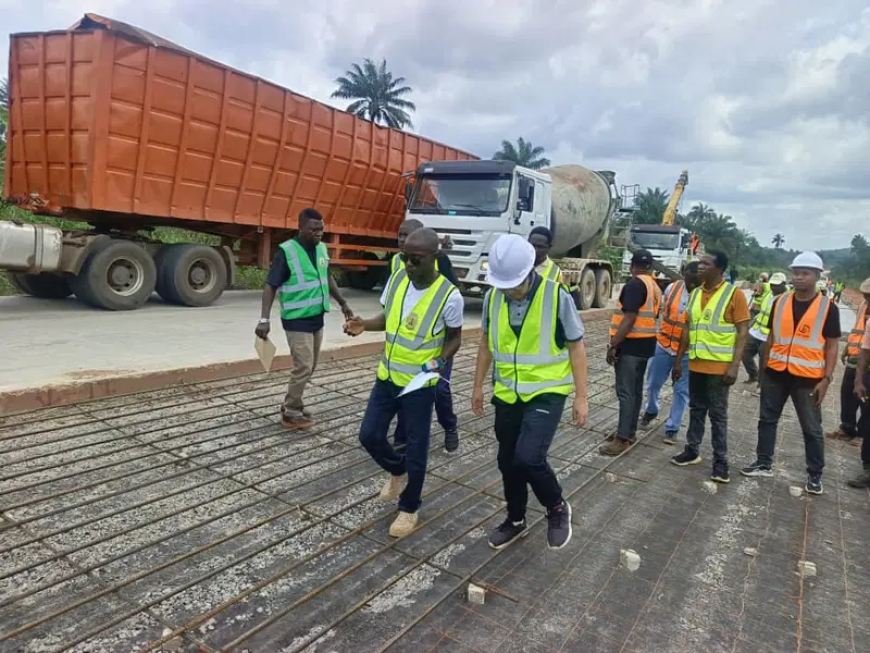Work on Ore-Ondo-Akure highway meets international specifications – Fed govt clarifies

The Federal Government has said that ongoing Ore-Ondo-Akure highway expansion project adhere strictly to approved international specifications.
Minister of Works, Dave Umahi, said this to counter allegations of substandard work on the construction of the road, by a content creator , in a viral video who raised an alarm over the use of wire mesh, instead of heavier iron rods, in certain sections of the construction.
Umahi, has however, assured Nigerians” of the road’s structural integrity and adherence to approved international specifications.
While expressing satisfaction with the level of work executed by the contractor handling the project, the Minister emphasised that upon completion, the road is engineered to last for more than 50 years.
According to him this “align with the federal government’s commitment to delivering durable, safe, and cost-effective road infrastructure in the country.
While assuring that there is no cause for concern, Umahi said that the construction of the 86.43-kilometre highway is in accordance with approved engineering designs and specifications, adding that the structural integrity of the pavement was not compromised.
Umahi, was represented by the Controller of Works in Ondo State, Olajide Hussein, monitored the Ajue corridor of the project in the Odigbo council area of the state.
He said, “We also saw the viral video, and the complainant specifically mentioned the use of wire mesh on the outer shoulders and suggested that the contractor use the same heavy reinforcement here on the carriage where we are standing with the outer shoulders. There is a functional difference between the main carriageway and the outer shoulder.
“So there are also structural differences in their construction. The main carriageway is the central part of the road pavement, and it is used for continuous traffic, with very heavy traffic loads running constantly.
We have trailers, trucks, buses, and other kinds of articulated vehicles. So it experiences very high flexural stresses, and it has to be designed to counter these forces
The outer shoulder, on the other hand, is expected to carry only occasional loads, maybe for diversions, maybe a vehicle breaks down and needs to be removed from the main carriageway to aid continuation of traffic, or for short stops to pick up and drop off passengers. So it doesn’t experience this continuous axle load, and it is designed with minimal reinforcement.
“Now, the use of A142 wire mesh, which you have seen on the outer shoulder, is a standard practice all over the world. In Nigeria and internationally, it is a standard practice.
“We use the heavy reinforcement which you can see on the carriageway because of the flexural stresses, and we use light wire meshes on the outer shoulders because they don’t carry as much load.
“So if you go to all our single carriageway rigid road constructions nationwide, you will find a similar design.
It is not peculiar to the Ore-Ondo-Akure Road. It is not peculiar to Ondo State. It is a highway standard found in Nigeria and internationally.”
Umahi, also clarified that the is a single carriage way not will not be dualised
According to him ” The only addition is the shoulder. The current condition of the road before this construction had no shoulder, and in the few cases where there was a shoulder, it was a surface-dressed shoulder. So now, the government has introduced a full 2.75-metre shoulder on each side.
“The contract is for a 4-year duration, and the contractor is fully on course, poised to complete before the end of the four years.
“It is a very standard road built according to international standards. Initially, the road was built using asphalt.
The Minister said ” But now, the ministry’s policy is to build all new roads with the CRCP technology, that is, Continuous Reinforced Concrete Pavement, which stands a better chance of surviving longer than the asphalt we were initially using.”

 admin
admin 


